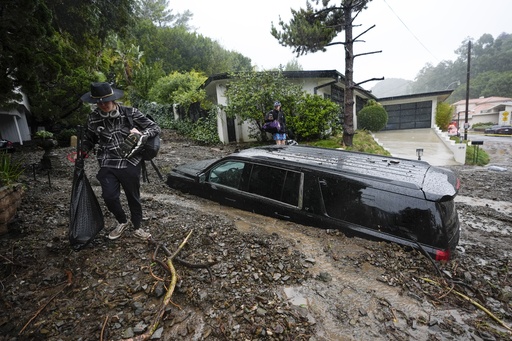
Atmospheric rivers are significant weather patterns characterized by a concentration of moisture that stretches across the Pacific Ocean toward regions near Hawaii. Upon making landfall, these weather systems can unleash substantial amounts of rain and snow. Here’s an overview of this meteorological phenomenon:
So, what exactly is an atmospheric river? These are long, narrow bands of water vapor that develop over oceans and travel through the atmosphere, effectively moving large quantities of moisture from the tropics to higher latitudes. They are observed worldwide but play a particularly crucial role along the West Coast of the United States, where they account for 30% to 50% of total annual precipitation. While they are essential for replenishing water supplies, they can also trigger severe weather conditions, including storms that may lead to flooding and landslides, as noted by the National Oceanic and Atmospheric Administration (NOAA).
Atmospheric rivers are generated by winds linked to cyclonic activity and usually have widths ranging from 250 to 375 miles (or 400 to 600 kilometers). Their movement is influenced by other prevailing weather patterns. Although many atmospheric river events are minor, the more intense ones can transport astounding volumes of moisture. Research indicates they can carry between seven to 15 times the average daily water flow of the Mississippi River, according to findings from the U.S. Geological Survey.
What occurs when atmospheric rivers make landfall? When the moisture-rich air ascends over mountain ranges like the Sierra Nevada, located along the California-Nevada border, the water vapor rises and cools, resulting in heavy precipitation that can manifest as either rain or snow, as per NOAA’s reports. Unlike typical cold winter storms originating from the North Pacific that contribute to the Sierra snowpack, atmospheric rivers tend to bring warmer conditions. While snowfall is likely at higher elevations, the lower altitudes usually receive rain, which can lead to rapid snowmelt, increased runoff, and even flooding, thus diminishing the snowpack essential for California’s water resources.
You may have heard of the term “pineapple express.” This refers to a particularly strong atmospheric river that flows in the tropical Pacific region near Hawaii.
The term “atmospheric river” was coined in the 1990s through research conducted by scientists Yong Zhu and Reginald E. Newell at the Massachusetts Institute of Technology. These weather patterns are frequently abbreviated as ARs in meteorological discussions.

